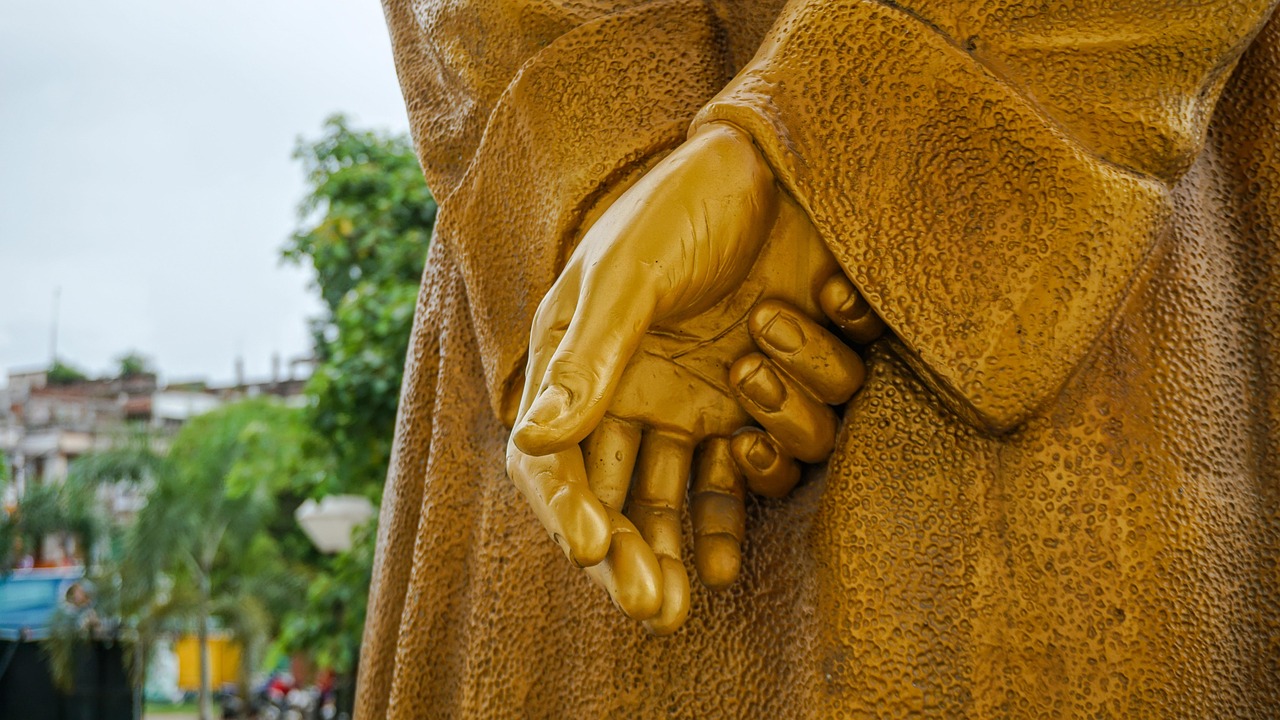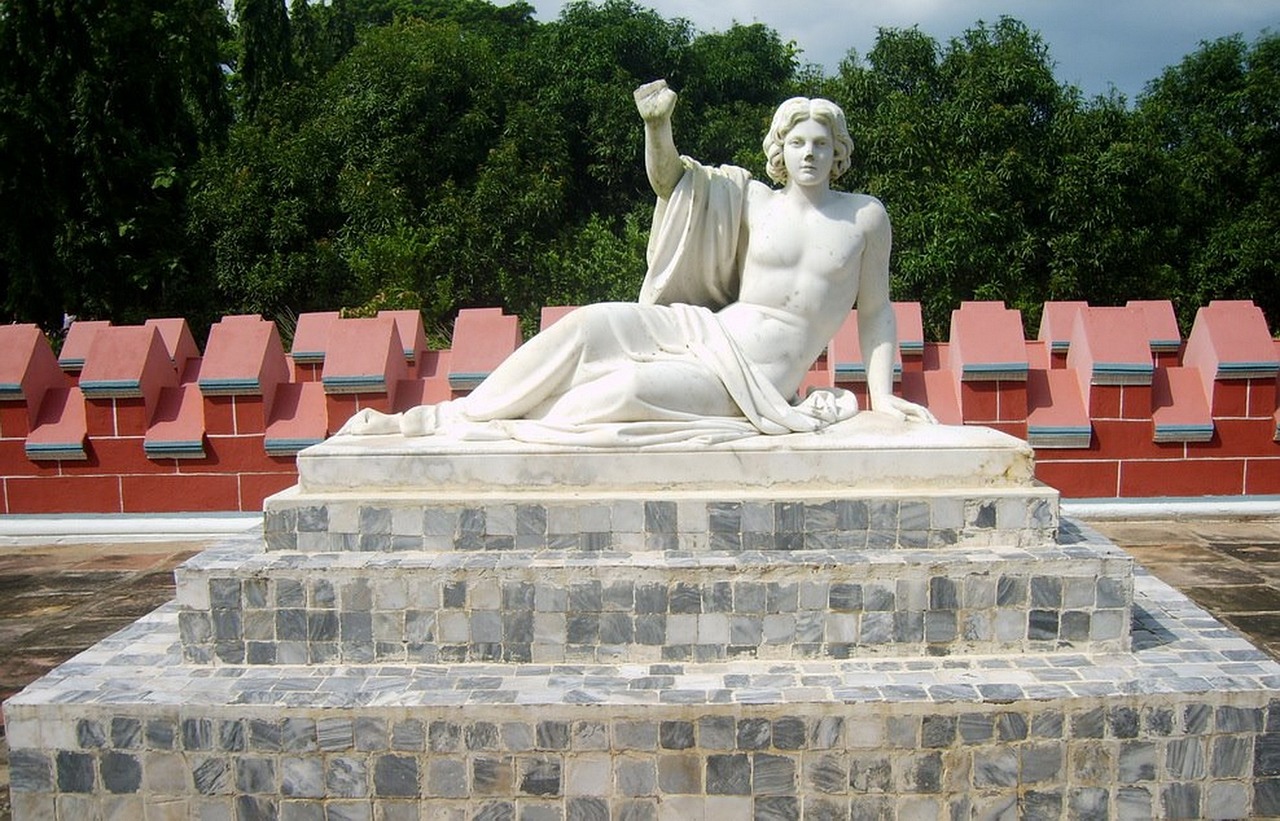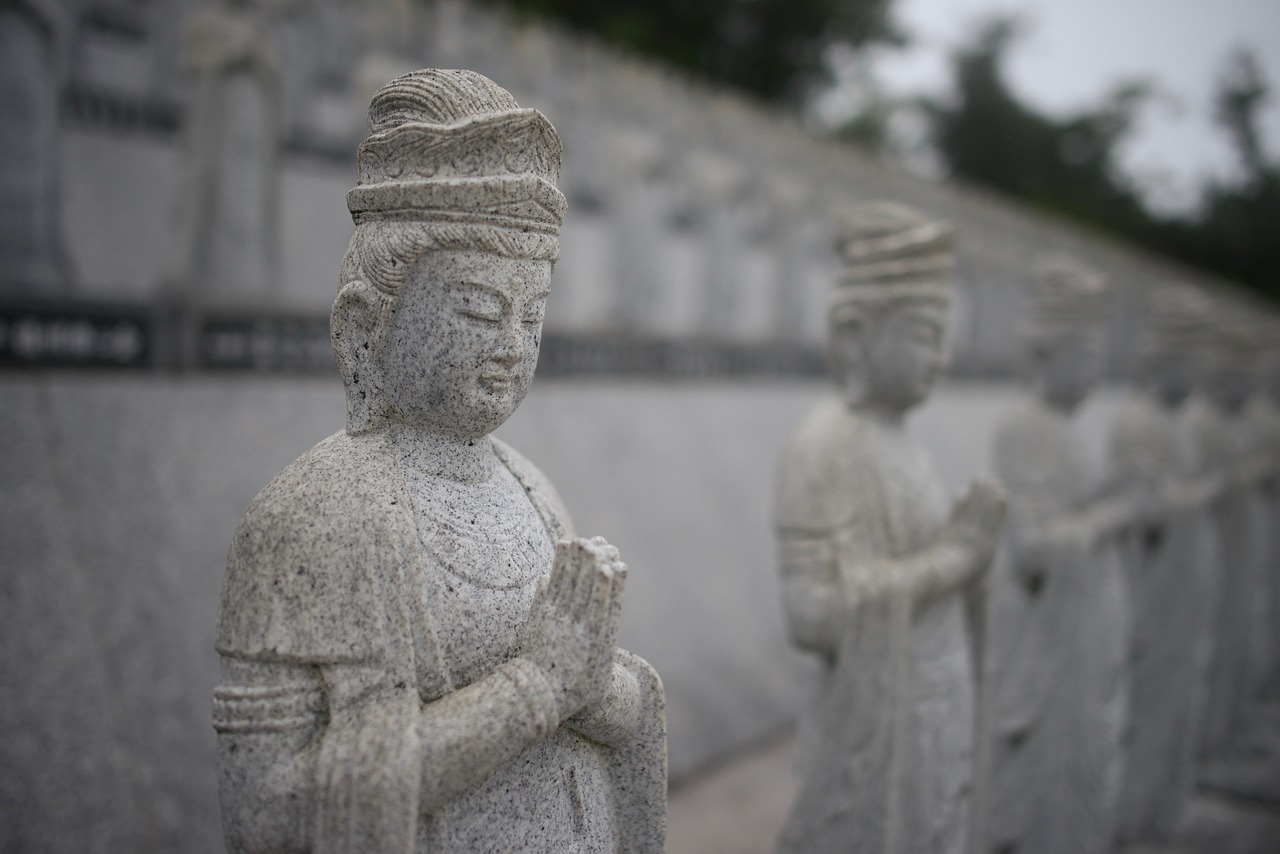This article delves into the profound influence of Rabindranath Tagore on Bengali literature, highlighting his remarkable works, innovative philosophies, and the cultural renaissance he ignited not only in Bengal but across the globe.
The Life of Rabindranath Tagore
Rabindranath Tagore was born on May 7, 1861, in Kolkata, India, into a prominent Bengali family. His early exposure to literature and the arts set the stage for his future endeavors. Tagore’s education at home and abroad shaped his unique literary voice, allowing him to blend Eastern and Western influences seamlessly.
Tagore’s Literary Contributions
Tagore’s literary oeuvre is vast, encompassing poetry, prose, and plays. His works are celebrated for their lyrical beauty and profound philosophical insights. Notable pieces include:
- Gitanjali – A collection of poems that earned him the Nobel Prize in Literature in 1913.
- Chokher Bali – A poignant novel that explores the complexities of love and relationships.
- Postmaster – A short story that reflects on isolation and human connection.
Philosophy and Themes in Tagore’s Works
Central themes in Tagore’s writings include love, nature, spirituality, and nationalism. His humanistic approach encourages readers to seek deeper connections with themselves and the world around them.
Tagore’s Influence on Bengali Culture
Tagore’s impact extends beyond literature; he influenced music through Rabindra Sangeet, a genre of songs he composed, and contributed significantly to visual arts and education, founding institutions that promote holistic learning.
The Global Impact of Tagore’s Work
Tagore’s legacy transcends borders. His works have been translated into numerous languages, introducing his ideas to a global audience and earning him international acclaim. His themes continue to resonate, inspiring contemporary writers and artists worldwide.
Conclusion: The Enduring Legacy of Tagore
Rabindranath Tagore remains a literary giant whose contributions to Bengali literature and culture have left an indelible mark. His works will undoubtedly inspire future generations, affirming his status as a timeless figure in the world of literature.

The Life of Rabindranath Tagore
Rabindranath Tagore, a towering figure in Indian literature, was born on May 7, 1861, in Kolkata, India. He hailed from a prominent Bengali family that was deeply rooted in the cultural and intellectual movements of the time. His father, Debendranath Tagore, was a leading figure in the Brahmo Samaj, a reformist religious and social movement. This environment fostered Tagore’s early exposure to literature, music, and art, shaping his future as a multifaceted creator.
Tagore’s educational journey began at home, where he was tutored by private instructors. Later, he attended St. Xavier’s College in Kolkata, although he left without completing his degree. This non-traditional education allowed him to explore various subjects, igniting his passion for literature and the arts. His early writings reflect the rich cultural heritage of Bengal, infused with the influences of Western literature and philosophy.
Throughout his life, Tagore traveled extensively, both within India and abroad, which enriched his understanding of different cultures and philosophies. His experiences in England, where he studied briefly, and his travels through Europe and the United States, profoundly influenced his literary voice. Tagore’s works often reflect his deep appreciation for nature, spirituality, and humanism, themes that resonate throughout his poetry and prose.
In addition to his literary pursuits, Tagore was a passionate advocate for social reform. He believed in the importance of education and founded Visva-Bharati University in Santiniketan, which aimed to blend the best of Eastern and Western educational philosophies. This institution became a center for artistic and intellectual exchange, further solidifying Tagore’s legacy as a cultural icon.
In conclusion, Rabindranath Tagore’s upbringing, education, and diverse experiences played a crucial role in shaping his literary voice and vision. His contributions to Bengali literature and culture remain significant, inspiring generations of readers and writers around the world.

Tagore’s Literary Contributions
Rabindranath Tagore, a towering figure in Bengali literature, made significant contributions that transcend regional boundaries. His literary oeuvre encompasses poetry, prose, and plays, each reflecting his profound insights into human nature, society, and spirituality. This section delves into Tagore’s major works, emphasizing their importance in both Bengali and world literature.
Tagore’s literary journey began in his childhood, nurtured by a rich cultural environment. His first major work, Gitanjali, published in 1910, is a collection of poems that explore themes of devotion and the divine. This masterpiece not only earned him the Nobel Prize in Literature in 1913 but also established his reputation as a global literary icon. The poems in Gitanjali reflect a synthesis of Indian and Western thought, showcasing Tagore’s ability to express complex spiritual ideas in simple yet profound language.
In addition to poetry, Tagore’s prose works, including novels such as Gora and Chokher Bali, delve into the intricacies of social relationships and cultural identity. These narratives often challenge societal norms and highlight the struggles of individuals against the backdrop of a changing Bengal. Tagore’s short stories, like Khudito Pashan and Postmaster, are celebrated for their psychological depth and poignant portrayal of human emotions.
Tagore’s contributions to theater are equally notable. His plays, including Raja and Chitrangada, blend traditional Indian theatrical forms with modern themes, exploring issues of love, power, and identity. These works not only enriched Bengali theater but also influenced the broader Indian cultural landscape.
Through his diverse body of work, Tagore has left an indelible mark on literature, inspiring countless writers and thinkers. His ability to weave together the personal and the universal makes his works timeless, resonating with audiences across generations and cultures.
Poetry: The Heart of Tagore’s Work
Rabindranath Tagore’s poetry stands as a testament to his profound understanding of the human experience, weaving together themes of love, nature, and spirituality. His works are not merely collections of verses; they are reflections of his philosophical and cultural beliefs, which resonate with readers across generations and geographical boundaries.
One of the most striking aspects of Tagore’s poetry is its universal appeal. He masterfully combines personal emotions with broader existential questions, allowing readers to find their own meanings within his words. His poems often explore the relationship between the individual and the cosmos, suggesting that personal experiences are interconnected with the larger tapestry of life. This theme of connectivity is evident in his famous collection, Gitanjali, where he expresses a deep yearning for unity with the divine and the universe.
Tagore’s style is characterized by a unique blend of lyrical beauty and philosophical depth. He employs simple yet evocative language, making complex ideas accessible to a wide audience. His use of imagery, metaphors, and symbols enhances the emotional resonance of his poetry, inviting readers to engage with the text on multiple levels. For instance, nature frequently serves as a backdrop in his works, symbolizing both beauty and transience, which reflects his belief in the impermanence of life.
Moreover, Tagore’s poetry is deeply rooted in his cultural context, yet it transcends local boundaries. His reflections on nationalism and social reform are particularly poignant, as they address the struggles of his time while advocating for a more equitable society. Through his verses, he encourages readers to reflect on their own roles in shaping the world around them.
In conclusion, Tagore’s poetry is not just an artistic endeavor; it is a profound exploration of the human spirit. His ability to intertwine personal and universal themes makes his work timeless and relevant, continuing to inspire readers and writers alike. As we delve into Tagore’s poetic world, we uncover layers of meaning that challenge us to reflect on our own lives and beliefs.
Gitanjali: A Masterpiece of Spirituality
Gitanjali, which translates to “Song Offerings,” is a profound collection of poems by the renowned Bengali poet Rabindranath Tagore. This masterpiece not only earned Tagore the Nobel Prize in Literature in 1913 but also established him as a significant figure in world literature. The collection comprises 103 poems that delve into themes of spirituality, devotion, and the human experience, resonating with readers across cultures and generations.
One of the most striking aspects of Gitanjali is its exploration of the relationship between the individual and the divine. Tagore’s verses reflect a deep sense of spirituality, inviting readers to engage in a personal dialogue with the universe. His use of simple yet evocative language allows for profound interpretations, making the poems accessible to a wide audience.
In Gitanjali, Tagore employs a unique blend of metaphor and imagery to convey complex ideas. For instance, the recurring motifs of nature and light symbolize the divine presence in everyday life. The poem “Where the mind is without fear” stands out as a call for freedom and enlightenment, advocating for a world where humanity transcends barriers.
Furthermore, Tagore’s philosophical insights in Gitanjali challenge societal norms and encourage introspection. His emphasis on love, unity, and the quest for truth resonates deeply, making the collection a timeless reflection of human emotions and aspirations. Readers often find solace and inspiration in his words, as they navigate their own spiritual journeys.
In conclusion, Gitanjali remains a cornerstone of Bengali literature and a beacon of Tagore’s literary genius. Its enduring themes of spirituality and humanity continue to inspire readers worldwide, affirming Tagore’s legacy as a transformative figure in literature.
Gitanjali,
Gitanjali, a collection of poems by the renowned Bengali poet Rabindranath Tagore, stands as a monumental work in the realm of literature. This article delves into the essence of Gitanjali, exploring its themes, significance, and the profound impact it has had on readers worldwide.
Tagore, awarded the Nobel Prize in Literature in 1913 for this very collection, infused Gitanjali with his unique blend of spirituality and humanism. The poems express a deep connection with the divine, nature, and the human experience, making them resonate universally.
| Aspect | Description |
|---|---|
| Themes | Spirituality, love, nature, and human connection |
| Style | Lyrical, simple yet profound language |
| Impact | Global recognition and influence on literature |
One of the most notable poems in Gitanjali is “Where the mind is without fear”, which calls for freedom and enlightenment. This poem, like many others in the collection, reflects Tagore’s vision for a more just and equitable society.
- Spiritual Exploration: Gitanjali invites readers to ponder their relationship with the divine.
- Human Emotions: The poems encapsulate the myriad emotions that define the human experience.
- Cultural Significance: Gitanjali has inspired countless adaptations in music, art, and literature.
In conclusion, Gitanjali remains a timeless masterpiece that transcends cultural boundaries. Tagore’s ability to weave spiritual and humanistic themes into his poetry ensures that his legacy endures, continuing to inspire generations of readers and writers alike.
Tagore’s most celebrated collection of poems, which earned him the Nobel Prize in Literature and continues to resonate with readers worldwide.
Rabindranath Tagore’s Gitanjali: A Masterpiece of Spirituality
Rabindranath Tagore’s Gitanjali, which translates to “Song Offerings,” is a collection of poems that earned him the Nobel Prize in Literature in 1913. This work is not only a testament to his literary genius but also a profound exploration of spirituality and the human experience. Through Gitanjali, Tagore invites readers into a world where the divine and the mundane intertwine, creating a timeless resonance that continues to touch hearts globally.
The Essence of Gitanjali
Comprising 103 poems, Gitanjali reflects Tagore’s deep spiritual beliefs and his quest for a connection with the divine. The poems are characterized by their lyrical beauty and philosophical depth, often exploring themes such as love, nature, and the search for meaning. Tagore’s unique style combines simplicity with profound insight, making his work accessible yet deeply moving.
Key Themes in Gitanjali
- Spiritual Awakening: The poems often depict a journey of self-discovery and spiritual awakening, urging readers to seek a deeper understanding of their existence.
- Connection with Nature: Nature plays a vital role in Gitanjali, symbolizing the divine and serving as a backdrop for Tagore’s reflections on life and spirituality.
- Universal Love: The theme of love transcends boundaries, emphasizing the interconnectedness of all beings and the importance of compassion.
Impact and Legacy
Gitanjali has left an indelible mark on literature and culture, inspiring countless readers and artists worldwide. Its translations into various languages have introduced Tagore’s profound insights to a global audience, fostering a greater appreciation for Bengali literature. The collection continues to be celebrated for its ability to resonate with readers across different cultures and eras.
Conclusion
In conclusion, Gitanjali stands as a testament to Rabindranath Tagore’s literary prowess and spiritual depth. Its exploration of universal themes has ensured its place as a classic in world literature, inspiring generations to seek a deeper connection with themselves and the divine.
Other Notable Poetry Collections
Rabindranath Tagore’s literary genius is not confined to his most famous work, Gitanjali. He has produced a myriad of poetry collections that reflect his profound insights into life, nature, and human emotions. Among these, two collections stand out: Sonar Tori and Chaitali.
| Poetry Collection | Overview | Significance |
|---|---|---|
| Sonar Tori | This collection features poems that celebrate the beauty of nature and the simplicity of rural life. | It resonates with readers for its vivid imagery and emotional depth, showcasing Tagore’s love for the Bengali landscape. |
| Chaitali | A collection that delves into the themes of love, longing, and the passage of time. | It highlights Tagore’s ability to convey complex emotions through simple yet profound language. |
In Sonar Tori, Tagore uses rich metaphors to paint a picture of his beloved Bengal, capturing the essence of its rivers, fields, and the lives of its people. The poems are imbued with a sense of nostalgia and a deep connection to the land, making them a staple in Bengali poetry.
On the other hand, Chaitali showcases Tagore’s exploration of human relationships and the transient nature of life. The poems evoke a sense of introspection, inviting readers to reflect on their own experiences of love and loss. Tagore’s mastery of language and rhythm shines through, making this collection a poignant addition to his oeuvre.
Both collections contribute significantly to Bengali literary heritage, offering insights into Tagore’s evolving thoughts and artistic expressions. They not only enhance our understanding of his body of work but also serve as a bridge connecting readers to the cultural and emotional landscape of Bengal.
Sonar Tori
, often celebrated as one of Rabindranath Tagore’s most cherished poetry collections, reflects the essence of Bengali literature and the cultural renaissance of the early 20th century. This article delves into the significance of , exploring its themes, style, and the impact it has had on readers both in Bengal and around the world.
Introduction
Rabindranath Tagore, a towering figure in Bengali literature, composed during a transformative period in his life. This collection encapsulates his deep connection to nature, spirituality, and the human experience, making it a timeless piece of art that resonates with many.
Overview of Sonar Tori
- Publication: First published in 1894, quickly became a staple in Bengali literature.
- Themes: The collection explores themes of love, nature, and the search for meaning, often reflecting Tagore’s philosophical beliefs.
- Style: Tagore’s unique poetic style combines lyrical beauty with profound insights, making his work accessible yet deeply philosophical.
Significance in Bengali Literature
holds a special place in the hearts of readers and scholars alike. It not only showcases Tagore’s literary prowess but also serves as a cultural touchstone that inspired generations of poets and writers in Bengal.
Impact on Readers
The collection has been pivotal in shaping the emotional landscape of Bengali poetry. Its verses evoke a sense of nostalgia and a connection to the natural world, encouraging readers to reflect on their own lives.
Conclusion
In summary, remains a vital part of Rabindranath Tagore’s legacy, embodying the spirit of Bengali literature. Its enduring appeal lies in its ability to connect with readers on multiple levels, ensuring that Tagore’s voice continues to resonate throughout time.
and
Rabindranath Tagore’s Legacy: How He Shaped Bengali Literature
This article explores the profound impact of Rabindranath Tagore on Bengali literature, examining his works, philosophies, and the cultural renaissance he inspired in Bengal and beyond.
The Life of Rabindranath Tagore
Rabindranath Tagore was born on May 7, 1861, in Kolkata, India. He was a polymath whose upbringing in a culturally rich family influenced his literary voice. His education at home and later at the University of Calcutta shaped his worldview, leading him to become a leading figure in Bengali literature.
Tagore’s Literary Contributions
- Poetry: The Heart of Tagore’s Work
- Gitanjali: A Masterpiece of Spirituality
- Prose Works: Novels and Short Stories
Tagore’s poetry reflects his philosophical and cultural beliefs, often exploring themes of love, nature, and spirituality.
Gitanjali, Tagore’s most celebrated collection of poems, earned him the Nobel Prize in Literature and continues to resonate with readers worldwide.
His novels and short stories often delve into social issues and the complexities of life in Bengal, showcasing his narrative prowess.
Philosophy and Themes in Tagore’s Works
- Spirituality and Humanism
- Nationalism and Social Reform
Tagore’s works are imbued with spiritual beliefs and humanism, inspiring readers to seek deeper understanding.
His writings addressed nationalism and advocated for a more just society, reflecting his commitment to social reform.
Tagore’s Influence on Bengali Culture
- Music: The Rabindra Sangeet
- Visual Arts and Education
Rabindra Sangeet, songs written and composed by Tagore, has had a profound impact on Bengali music.
Tagore contributed to visual arts and founded educational institutions promoting holistic learning.
The Global Impact of Tagore’s Work
- Translations and International Recognition
- Legacy in Contemporary Literature
Tagore’s works have been translated into numerous languages, introducing his ideas to a global audience.
His themes and styles continue to inspire contemporary writers and artists worldwide.
Conclusion: The Enduring Legacy of Tagore
Rabindranath Tagore’s impact on literature, culture, and society is profound. His works will continue to inspire future generations, affirming his status as a literary giant.
Chaitali,
Chaitali is one of the notable poetry collections by the esteemed Bengali poet Rabindranath Tagore. This collection reflects Tagore’s profound understanding of human emotions, nature, and the spiritual journey of life. In this article, we will explore the significance of Chaitali within the context of Tagore’s literary contributions and its impact on Bengali literature.
Published in 1914, Chaitali is a collection that showcases Tagore’s mastery of poetic form and his ability to convey deep philosophical insights through simple yet evocative language. The title translates to “Spring,” symbolizing renewal and the beauty of nature, themes that are prevalent throughout the poems.
- Nature and Beauty: Tagore’s poems in Chaitali often celebrate the beauty of nature, reflecting his deep connection with the environment.
- Human Emotions: The collection delves into the complexities of human feelings, from love and joy to sorrow and longing.
- Spirituality: Tagore’s spiritual beliefs are woven into the fabric of his poetry, inviting readers to explore their own spiritual journeys.
Chaitali stands as a testament to Tagore’s influence on Bengali literature. His innovative use of language and imagery paved the way for future generations of poets. The collection is celebrated for its lyrical quality, making it a cherished part of Bengali literary heritage.
Tagore’s ability to resonate with readers on a personal level has ensured the lasting popularity of Chaitali. The themes of love, nature, and spirituality continue to inspire not only poets but also artists and musicians, contributing to the rich tapestry of Bengali culture.
In summary, Chaitali is more than just a poetry collection; it is a reflection of Tagore’s artistic genius and his deep understanding of the human experience. As we explore the depths of this work, we recognize its enduring legacy in Bengali literature and its influence on the cultural landscape.
and their contributions to Bengali literary heritage.
Rabindranath Tagore’s Legacy: How He Shaped Bengali Literature
This article explores the profound impact of Rabindranath Tagore on Bengali literature, examining his works, philosophies, and the cultural renaissance he inspired in Bengal and beyond.
The Life of Rabindranath Tagore
Rabindranath Tagore was born on May 7, 1861, in Kolkata. He was raised in a wealthy family that valued education and culture. His early experiences, including exposure to various forms of art and literature, shaped his unique literary voice.
Tagore’s Literary Contributions
- Poetry: The Heart of Tagore’s Work
- Gitanjali: A Masterpiece of Spirituality
- Other Notable Poetry Collections:
- Sonar Tori
- Chaitali
- Prose Works: Novels and Short Stories
Tagore’s poetry reflects deep philosophical and cultural beliefs, making it timeless and universal. His themes often explore love, nature, and spirituality.
Gitanjali, Tagore’s most celebrated collection of poems, earned him the Nobel Prize in Literature. Its spiritual depth resonates with readers worldwide.
These collections significantly contribute to Bengali literary heritage.
Tagore’s novels and short stories often delve into social issues and human relationships, portraying the complexities of life in Bengal.
Philosophy and Themes in Tagore’s Works
- Spirituality and Humanism: Tagore’s works inspire readers to seek deeper understanding and connection.
- Nationalism and Social Reform: His writings advocate for a just and equitable society.
Tagore’s Influence on Bengali Culture
- Music: The Rabindra Sangeet
- Visual Arts and Education: Tagore founded educational institutions promoting holistic learning.
This genre consists of songs written and composed by Tagore, significantly impacting Bengali music.
The Global Impact of Tagore’s Work
- Translations and International Recognition: Tagore’s works have been translated, introducing his ideas globally.
- Legacy in Contemporary Literature: His themes continue to inspire contemporary writers and artists.
Conclusion: The Enduring Legacy of Tagore
Rabindranath Tagore’s impact on literature and culture is profound, affirming his status as a literary giant whose works will continue to inspire future generations.
Prose Works: Novels and Short Stories
Rabindranath Tagore’s prose works, encompassing both novels and short stories, serve as a profound reflection of the social fabric and cultural dynamics of Bengal. His narratives delve into the intricate web of human relationships, often portraying the struggles and aspirations of individuals against the backdrop of societal norms and expectations.
Throughout his literary career, Tagore crafted stories that not only entertain but also provoke thought and encourage introspection. His characters are often depicted as complex and multi-dimensional, navigating the challenges of love, duty, and identity. For instance, in his novel Gora, Tagore explores the themes of nationalism and identity, presenting a protagonist who grapples with his sense of belonging in a rapidly changing society.
In addition to novels, Tagore’s short stories are equally impactful. His collection titled Galpaguchchha showcases a variety of narratives that address social issues such as gender inequality, class disparity, and the impact of colonialism. Each story is imbued with a sense of empathy and understanding, inviting readers to reflect on their own lives and the world around them.
Tagore’s ability to blend lyrical prose with profound philosophical insights sets his work apart in Bengali literature. His stories often conclude with a sense of ambiguity, leaving readers to ponder the deeper meanings behind human actions and societal constraints. This literary style not only engages the audience but also encourages a dialogue about social reform and human rights.
In conclusion, Tagore’s novels and short stories are more than mere narratives; they are a reflection of the complexities of life in Bengal. They challenge readers to confront social realities while celebrating the resilience of the human spirit.
Philosophy and Themes in Tagore’s Works
Rabindranath Tagore, a luminary in the realm of literature, intricately wove his personal philosophies and themes into his writings. His works delve into various aspects of the human experience, encapsulating profound insights on love, nature, spirituality, and nationalism. Each theme not only reflects Tagore’s worldview but also resonates deeply with readers across generations.
- Love: Love in Tagore’s works transcends mere romantic notions; it embodies a universal connection among humanity. His poetry often celebrates the beauty of relationships and the profound emotional bonds that unite people. Through verses that explore both the joys and sorrows of love, Tagore invites readers to experience the full spectrum of human emotions.
- Nature: Nature serves as a recurring motif in Tagore’s writings. He portrays it as a source of inspiration and reflection, emphasizing the interconnectedness between humans and the natural world. Tagore’s vivid descriptions of landscapes and natural phenomena reveal his deep appreciation for the environment, urging readers to find solace and wisdom in nature’s beauty.
- Spirituality: Tagore’s exploration of spirituality is profound and multifaceted. He seeks to bridge the gap between the divine and the mundane, encouraging readers to engage in self-discovery and introspection. His works often reflect a quest for meaning and a yearning for a deeper connection with the universe, making spirituality a central theme in his literary canon.
- Nationalism: Tagore’s reflections on nationalism are particularly significant in the context of colonial India. He critiques the narrow definitions of national identity and advocates for a more inclusive and compassionate understanding of nationhood. His writings inspire a sense of pride in cultural heritage while promoting unity and social justice.
In conclusion, the themes of love, nature, spirituality, and nationalism in Tagore’s works not only reflect his personal beliefs but also serve as a mirror to the complexities of human existence. His literary legacy continues to inspire readers, inviting them to explore their own relationships with these fundamental aspects of life.
Spirituality and Humanism
Rabindranath Tagore, a luminary in the world of literature, intricately wove his spiritual beliefs and humanistic approach throughout his works. His writings serve as a beacon, guiding readers toward a deeper understanding of themselves and their connection to the universe.
Tagore’s spirituality is deeply rooted in his belief that every individual possesses a divine essence. This belief is evident in his poetry, where he often explores themes of unity and interconnectedness. For Tagore, spirituality transcends organized religion, inviting readers to engage with the divine in their own unique ways. His famous collection, Gitanjali, encapsulates this essence, urging individuals to seek a personal relationship with the divine through introspection and love.
Moreover, Tagore’s humanistic approach emphasizes the inherent value of every person. He championed the idea that understanding and compassion are essential for societal progress. Through his stories and plays, he portrayed characters who grapple with their identities and relationships, reflecting the complexities of human existence. This portrayal encourages readers to empathize with others, fostering a sense of community and shared humanity.
Tagore’s works resonate with readers across generations, inspiring them to explore their own spiritual paths while embracing the human experience. His ability to blend philosophy with art creates a profound impact, encouraging a quest for knowledge and understanding. In a world often divided by differences, Tagore’s message of love and unity remains a powerful reminder of our shared humanity.
In conclusion, Rabindranath Tagore’s spiritual beliefs and humanistic ideals not only enrich his literary contributions but also inspire readers to seek a deeper connection with themselves and others. His legacy continues to resonate, inviting us all to explore the profound questions of existence.
Nationalism and Social Reform
Rabindranath Tagore, a towering figure in Bengali literature, profoundly engaged with the themes of nationalism and social reform throughout his works. His writings reflect a deep concern for the social injustices of his time, urging a move towards a more equitable society.
Tagore’s approach to nationalism was unique. Unlike many of his contemporaries who embraced a narrow, exclusionary form of national identity, Tagore envisioned a global community where cultural and national boundaries could be transcended. He believed that true nationalism should not be about exclusion but rather about fostering unity and understanding among diverse peoples. This is evident in his essays and poems, where he often criticized the divisive nature of political nationalism.
In his literary works, Tagore addressed the social issues prevalent in Indian society, such as caste discrimination, gender inequality, and poverty. His characters often grapple with these challenges, reflecting the struggles of the common people. Through stories like Ghare-Baire (The Home and the World), he explored the conflicts between traditional values and modernity, advocating for a more just society.
Tagore’s call for social reform was not limited to literature alone; he was also actively involved in educational initiatives. He founded Visva-Bharati University, which aimed to promote a holistic education that combined the arts and sciences, fostering a sense of social responsibility among its students. His philosophy emphasized the importance of humanism and the need for individuals to contribute positively to society.
In conclusion, Tagore’s writings serve as a powerful reminder of the importance of nationalism rooted in compassion and the necessity of social reform to create a more equitable world. His legacy continues to inspire movements for justice and equality, making his work relevant even today.
Tagore’s Influence on Bengali Culture
Rabindranath Tagore, a luminary of Bengali literature, profoundly shaped the cultural landscape of Bengal through his diverse artistic expressions. His influence extends beyond literature into music, visual arts, and education, creating a rich tapestry of cultural heritage that continues to resonate today.
Music: The Birth of Rabindra Sangeet
One of Tagore’s most significant contributions is the genre of Rabindra Sangeet, a collection of songs that he both wrote and composed. These songs, characterized by their lyrical beauty and emotional depth, reflect Tagore’s philosophical ideals and cultural sentiments. The melodies often draw from traditional Bengali folk music, yet they exhibit a unique sophistication that has made them timeless. Today, Rabindra Sangeet is an integral part of Bengali cultural identity, performed at various cultural events and celebrations.
Visual Arts: A New Perspective
Tagore was also a talented painter and visual artist, and his works in this medium challenged conventional artistic norms of his time. He believed that art should express the inner self and connect deeply with the viewer. His paintings, often abstract and emotive, have influenced countless artists in Bengal and beyond. Tagore’s approach to visual arts emphasized creativity and personal expression, inspiring a new generation of artists to explore their unique voices.
Education: A Visionary Approach
In addition to his artistic endeavors, Tagore founded Visva-Bharati University in Santiniketan, which was aimed at promoting holistic education that combined the arts, humanities, and sciences. His educational philosophy emphasized experiential learning, creativity, and a connection to nature. This innovative approach has left a lasting impact on educational practices in Bengal and has inspired similar institutions globally.
Conclusion: A Lasting Legacy
Rabindranath Tagore’s contributions to music, visual arts, and education have woven a rich cultural fabric that continues to inspire and influence generations. His legacy is not just confined to his literary achievements but extends to the very essence of Bengali identity, making him a pivotal figure in the cultural history of Bengal.
Music: The Rabindra Sangeet
Rabindra Sangeet, a unique genre of music, is an integral part of Bengali culture, comprising songs written and composed by the illustrious Rabindranath Tagore. These songs encapsulate a wide range of emotions, themes, and melodies that reflect the rich tapestry of Bengali life. The genre not only showcases Tagore’s profound literary prowess but also serves as a musical expression of his philosophical and spiritual beliefs.
Origins and Characteristics
Emerging in the early 20th century, Rabindra Sangeet is characterized by its lyrical beauty and melodic simplicity. Tagore’s songs often explore themes of love, nature, and spirituality, making them timeless and relatable. The incorporation of classical Indian music and folk elements adds to the genre’s diversity, creating a sound that resonates deeply with listeners.
Impact on Bengali Music
The influence of Rabindra Sangeet on Bengali music is profound. It has inspired countless musicians and composers to draw from Tagore’s work, enriching the musical landscape of Bengal. Notably, artists such as Hemanta Mukherjee and Sandhya Mukherjee have contributed to the popularization of these songs, ensuring their place in the hearts of the people.
Cultural Significance
Beyond its musicality, Rabindra Sangeet plays a crucial role in cultural events, festivals, and educational institutions across Bengal. It fosters a sense of identity and unity among Bengalis, often performed during significant occasions, thus keeping Tagore’s legacy alive. The songs also serve as a medium for expressing social and political sentiments, reflecting the changing dynamics of society.
Conclusion
In conclusion, Rabindra Sangeet is not just a genre of music; it is a cultural phenomenon that embodies the essence of Bengali heritage. Its impact on Bengali music and society is immeasurable, ensuring that Tagore’s voice continues to echo through generations.
Visual Arts and Education
Rabindranath Tagore was not only a literary giant but also a significant figure in the realm of visual arts and education. His contributions in these areas reflect his holistic approach to culture and learning, which aimed to nurture the mind, body, and spirit of individuals.
Tagore’s engagement with visual arts began during his childhood when he was exposed to various forms of artistic expression. He believed that art should be accessible to all, and he often experimented with different mediums, including painting and drawing. His artwork, characterized by vibrant colors and emotive themes, showcases his deep connection to nature and human emotions. Tagore’s paintings often reflect his philosophical ideas, merging the realms of art and spirituality.
In addition to his artistic pursuits, Tagore played a pivotal role in founding educational institutions that emphasized holistic learning. He established Shantiniketan in 1901, a school that aimed to foster creativity and critical thinking among students. At Shantiniketan, education was not confined to traditional subjects; instead, it integrated arts, music, and nature into the curriculum. Tagore’s vision was to create a nurturing environment where students could explore their individuality and develop a sense of social responsibility.
| Institution | Year Established | Focus Areas |
|---|---|---|
| Shantiniketan | 1901 | Holistic education, arts, music |
| Visva-Bharati | 1921 | Cultural exchange, global education |
Tagore’s educational philosophy emphasized experiential learning, where students learned through interaction with their environment. This approach was revolutionary at the time and laid the groundwork for modern educational practices that prioritize student engagement and creativity.
In conclusion, Rabindranath Tagore’s contributions to visual arts and education have had a lasting impact, inspiring generations to appreciate the interconnectedness of art and learning. His legacy continues to influence contemporary educational practices and artistic expressions, making him a timeless figure in both fields.

The Global Impact of Tagore’s Work
Rabindranath Tagore, a luminary in the world of literature, transcended the boundaries of Bengal to leave an indelible mark on global literature and cultural exchange. His works, characterized by their profound philosophical insights and lyrical beauty, have inspired countless writers and thinkers across diverse cultures.
Tagore’s literary genius is not confined to the pages of his books; it extends to the very fabric of global literature. His poetry, particularly the celebrated Gitanjali, has been translated into numerous languages, allowing his thoughts on spirituality and humanity to resonate with audiences worldwide. The Nobel Prize in Literature awarded to him in 1913 was a testament to his universal appeal and the significant impact of his work on the literary landscape.
Moreover, Tagore was a pioneer of cultural exchange. He traveled extensively, sharing his ideas and engaging with various intellectual circles. This exposure enriched his writings and fostered a dialogue between Eastern and Western philosophies. His interactions with notable figures such as Albert Einstein and W.B. Yeats exemplify his role as a bridge between cultures, enhancing mutual understanding and appreciation.
In contemporary literature, Tagore’s themes of love, nature, and social justice continue to inspire modern writers. His emphasis on the interconnectedness of humanity resonates strongly in today’s globalized world, where issues of identity and belonging are ever more pertinent. Authors and artists draw from his rich tapestry of ideas, ensuring that his legacy endures.
In conclusion, Rabindranath Tagore’s influence extends far beyond the geographical confines of Bengal. His contributions to global literature and cultural exchange have created a lasting legacy that continues to inspire and challenge individuals across the globe, affirming his status as a true literary giant.
Translations and International Recognition
Rabindranath Tagore, a luminary in the realm of literature, not only enriched Bengali culture but also made significant strides on the global stage through his translations. His works, deeply rooted in the essence of Bengali life and philosophy, found resonance with audiences far beyond the borders of India. This section delves into the translations of Tagore’s masterpieces and highlights how they introduced his profound ideas to a global audience, ultimately earning him international acclaim.
Tagore’s literary genius is evident in his ability to convey complex emotions and thoughts through simple yet powerful language. His most famous work, Gitanjali, was translated into English by Tagore himself, which played a crucial role in its global acceptance. The English version not only retained the essence of the original poems but also made them accessible to a wider audience, leading to Tagore being awarded the Nobel Prize in Literature in 1913. This recognition marked a significant milestone, establishing him as the first non-European to receive the prestigious award.
Moreover, translations of his other works, such as Chokher Bali and Shesher Kobita, further showcased his literary prowess. These translations were instrumental in introducing themes of love, social issues, and the human condition to international readers. The depth of his narratives and the richness of his characters captivated literary circles around the world, prompting scholars and enthusiasts alike to explore Bengali literature.
Tagore’s influence extended beyond literature; his thoughts on education, spirituality, and nationalism resonated with global movements for change. His ideas inspired leaders and thinkers, contributing to dialogues on social reform and cultural identity across various nations.
In conclusion, the translations of Rabindranath Tagore’s works have been pivotal in bridging cultural gaps and fostering a greater understanding of Bengali literature and philosophy. His legacy continues to thrive, inspiring generations of readers and writers worldwide.
Legacy in Contemporary Literature
Rabindranath Tagore’s profound influence on literature transcends time and geography, inspiring a multitude of contemporary writers and artists. His themes of love, spirituality, and nature resonate deeply in today’s literary landscape, encouraging new generations to explore similar motifs in their work.
One of the most significant aspects of Tagore’s legacy is his ability to weave universal themes into the fabric of local culture. His exploration of human emotions and relationships has paved the way for modern authors to delve into the complexities of the human experience. For instance, writers such as Chimamanda Ngozi Adichie and Salman Rushdie have drawn inspiration from Tagore’s emphasis on identity and belonging, integrating these elements into their narratives.
Moreover, Tagore’s unique style, characterized by lyrical prose and rich imagery, continues to influence poets and playwrights worldwide. Contemporary poets like Mary Oliver and Rupi Kaur echo Tagore’s ability to evoke deep emotions through simple yet powerful language, proving that his stylistic choices remain relevant and impactful.
In the realm of visual arts, Tagore’s influence is palpable as well. Artists like Subodh Gupta and Bharti Kher incorporate themes of identity and cultural heritage reminiscent of Tagore’s explorations. Their works reflect the ongoing dialogue between tradition and modernity, a hallmark of Tagore’s artistic vision.
Furthermore, Tagore’s commitment to social reform and education inspires contemporary activists and educators. His belief in the transformative power of art and literature encourages modern thinkers to advocate for social justice and equality, reinforcing the notion that literature can be a catalyst for change.
In conclusion, Rabindranath Tagore’s legacy is not merely historical; it is a living force that continues to shape contemporary literature and art. His themes, styles, and philosophies inspire writers and artists across the globe, affirming his status as a timeless literary giant.

Conclusion: The Enduring Legacy of Tagore
Rabindranath Tagore, a luminary of Bengali literature, has left an indelible mark on the cultural and literary landscape of not only Bengal but also the world. His profound insights into the human experience, coupled with his artistic genius, have established him as a literary giant whose influence transcends time and geography. Tagore’s works, rich with themes of love, nature, and spirituality, resonate deeply with readers, inviting them to explore the complexities of life and the essence of existence.
Tagore’s contributions to literature are not confined to poetry alone; his novels, short stories, and plays reflect a keen understanding of societal issues and the human condition. His ability to weave intricate narratives that challenge societal norms and inspire change is a testament to his literary prowess. Through his writings, Tagore advocated for social reform and nationalism, urging his readers to seek a more equitable society.
Moreover, Tagore’s influence extends beyond literature into music, visual arts, and education, shaping the cultural fabric of Bengal. The genre of Rabindra Sangeet, comprising songs penned and composed by him, continues to be a pivotal part of Bengali music, enriching the cultural heritage. His founding of educational institutions aimed at holistic learning further underscores his commitment to nurturing creativity and critical thinking among future generations.
In a global context, Tagore’s works have been translated into numerous languages, allowing his ideas to permeate diverse cultures. His status as the first non-European Nobel laureate in Literature is a testament to the universal appeal of his writings. Even today, contemporary writers and artists draw inspiration from his themes and styles, ensuring that Tagore’s legacy remains vibrant.
In conclusion, the enduring legacy of Rabindranath Tagore is characterized by his profound impact on literature, culture, and society. His works, rich with philosophical depth and artistic brilliance, will undoubtedly continue to inspire future generations, affirming his place as a timeless figure in the literary world.


























































